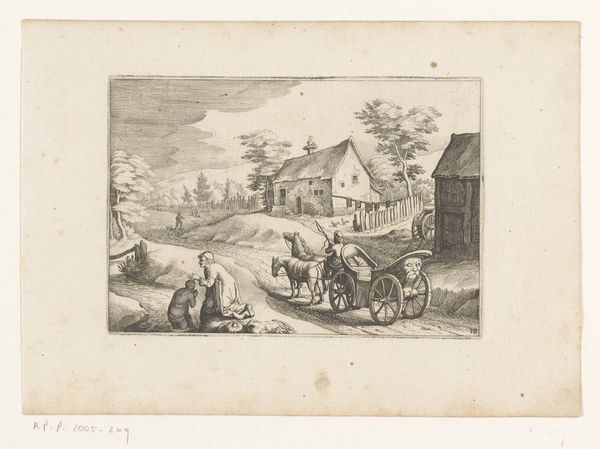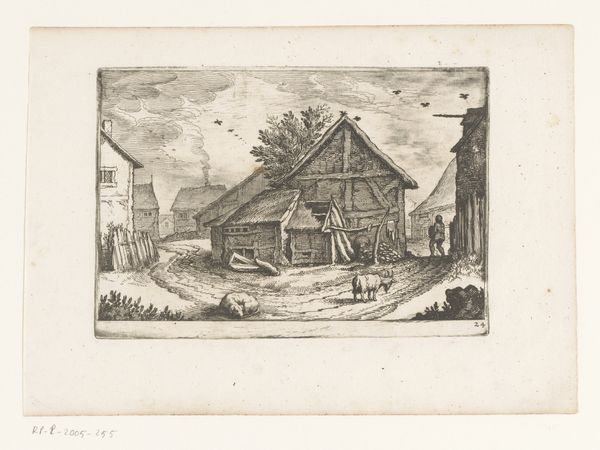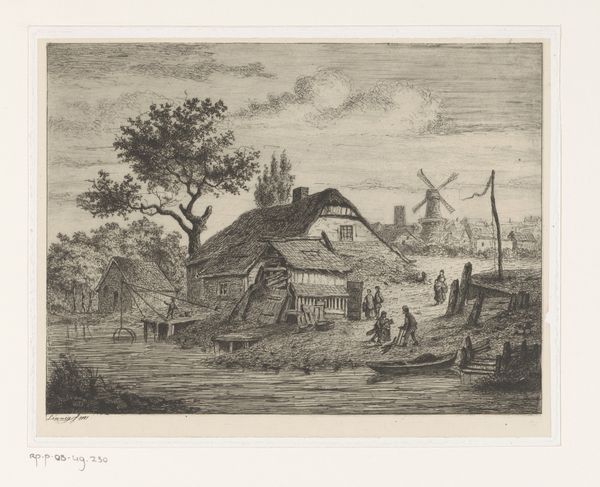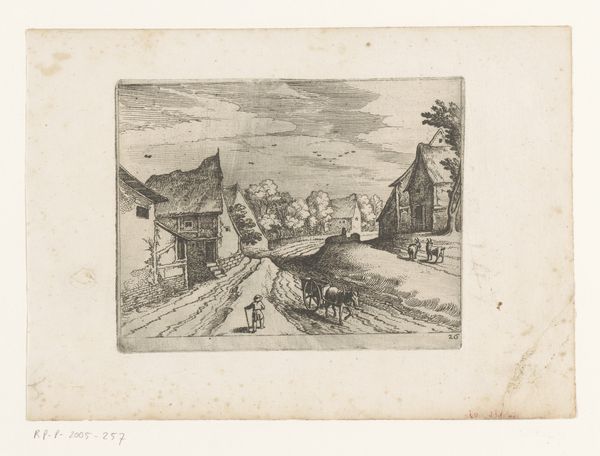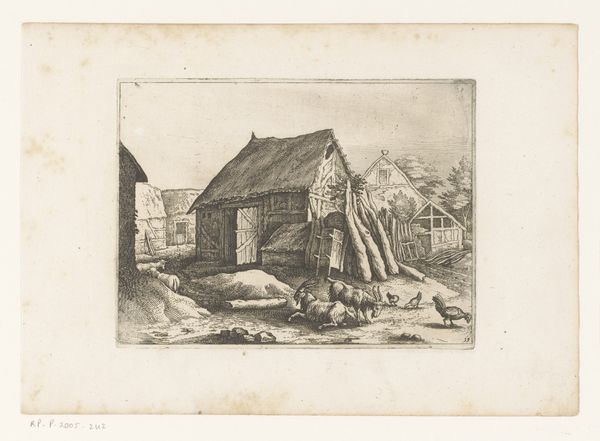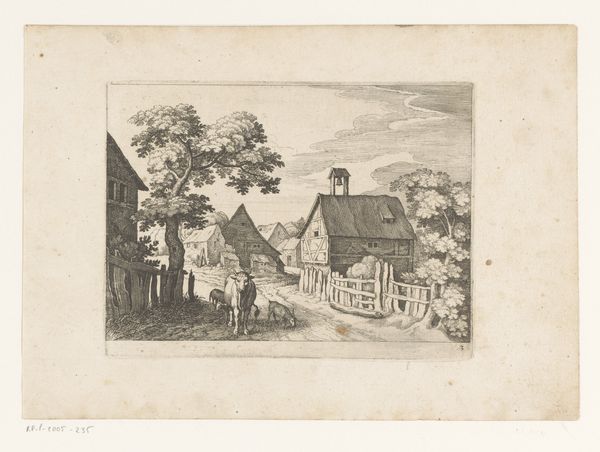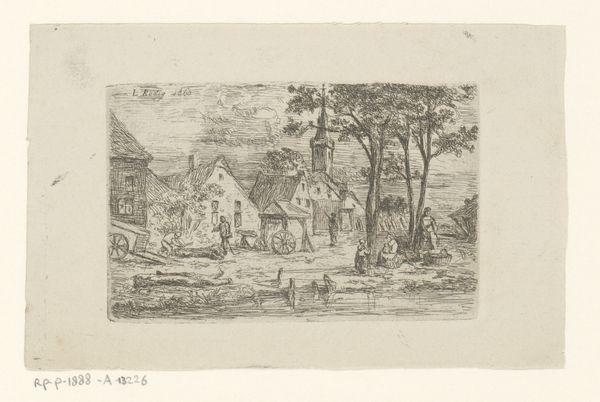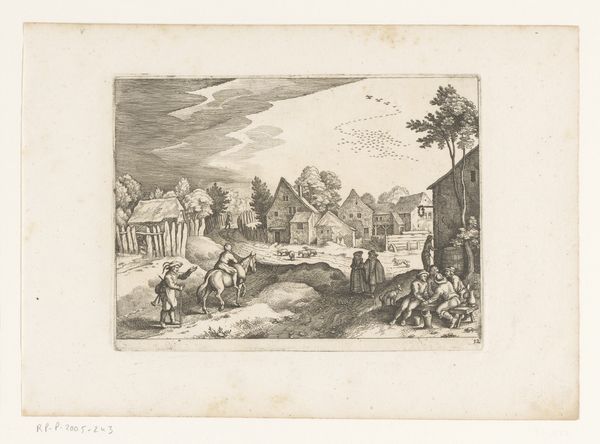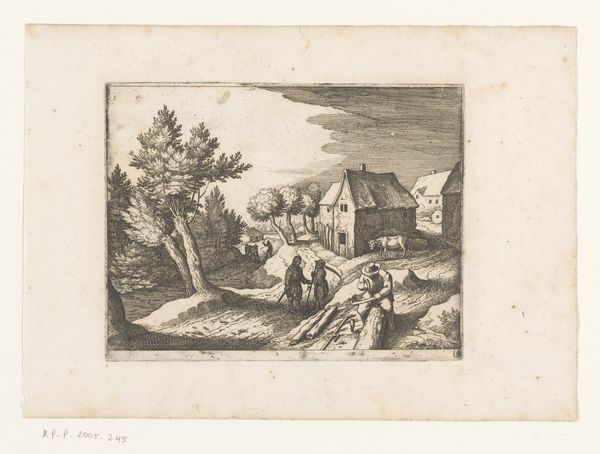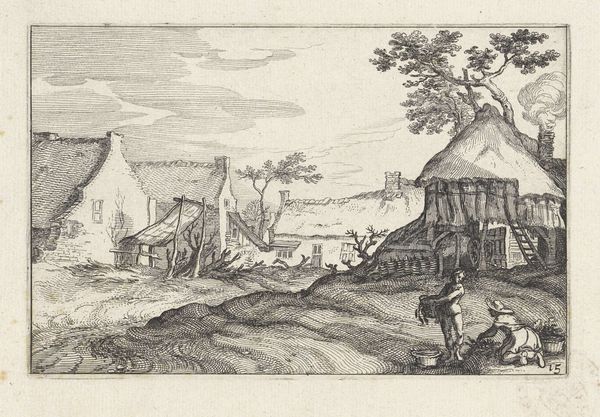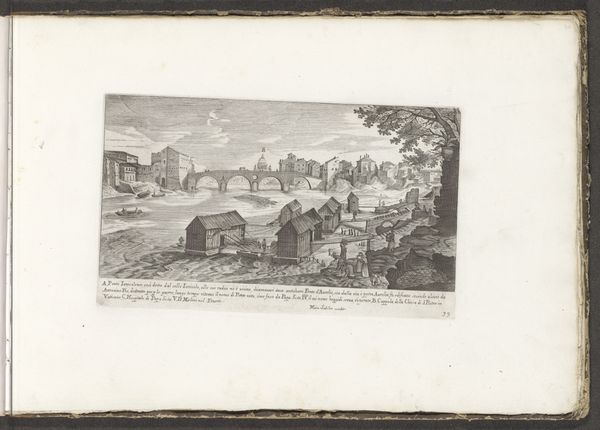
print, engraving
#
baroque
# print
#
landscape
#
river
#
engraving
Dimensions: height 120 mm, width 165 mm
Copyright: Rijks Museum: Open Domain
Editor: Here we have Matthäus Merian's "River Landscape with Rowboat and Washing Women," from 1620. It's a baroque engraving, quite small, and gives off this impression of everyday life playing out in the shadow of something grander. I'm intrigued by how the mundane – the washing women, the rowboat – coexists with the implied presence of a distant castle. How do you interpret this work? Curator: It’s a fascinating piece to consider within its historical context. This image really reflects the rising merchant class of the Dutch Golden Age. While aristocracy still existed (note the distant castle that you pointed out), the power dynamics were visibly shifting, with mercantile activities dominating center stage. Observe how this print aestheticizes labor; it turns what might be perceived as toil into picturesque vignettes. Notice how neatly composed the scene is, even as it represents the laboring classes. How might this idealized vision have functioned? Editor: So, it’s not necessarily a realistic portrayal but something closer to a staged scene, reflecting the values of the emerging middle class who are probably its intended buyers. The activities in the foreground are, in a way, tamed by the order of the composition, a far cry from, say, paintings from the French Revolution depicting working class struggle! Is it then fair to say that Merian is not so much documenting a landscape but using it to subtly propagate ideas? Curator: Precisely! The print becomes a powerful tool for disseminating values – hard work, piety, a carefully ordered society. These landscapes became incredibly popular, reflecting a desire for a kind of visual social engineering, promoting these emerging bourgeois values. Editor: I see it now, it really spotlights the way art doesn’t just reflect reality but can be used to shape perceptions. Curator: Indeed. Reflecting on its position as an easily reproducible print meant that such an idea could spread, becoming influential amongst the middle classes, and influencing how they wanted their own societies to look.
Comments
No comments
Be the first to comment and join the conversation on the ultimate creative platform.
